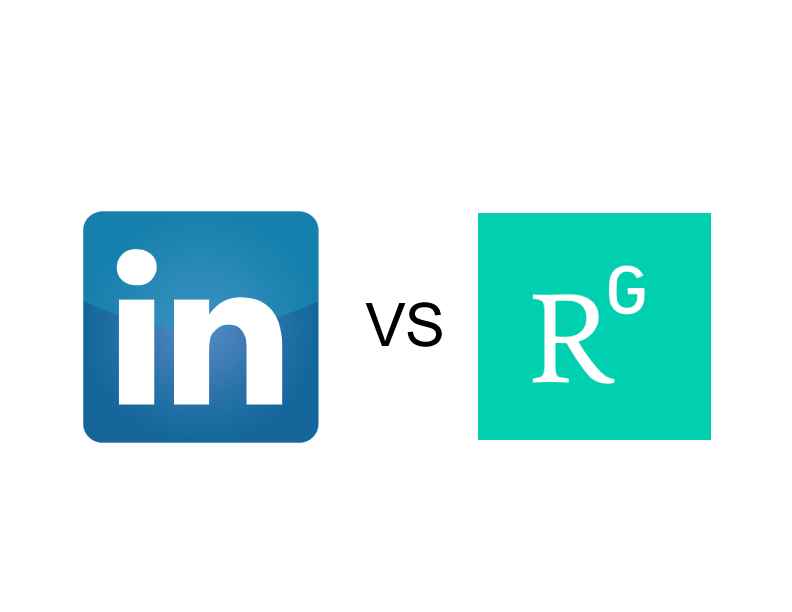LinkedIn! In a series of four posts, we are delving into LinkedIn and discussing its advantages for science PhDs. In this post, I will discuss two popular online platforms used for scientific networking: LinkedIn and ResearchGate. Along the way, I will share examples and insights. Here we go!

Without doubt, you must have a LinkedIn account. LinkedIn is the Facebook of the professional world. Everyone has it and it is a great resource for staying up to date with your colleagues, companies/organizations related to your field, etc.
Launched in 2003, LinkedIn is a website that connects professionals of all careers, not just scientists. This highly visible website evolves rapidly to meet our needs as professionals and is a gateway to networking.
LinkedIn has the following features:
- Online resume that goes beyond the paper copy. Include media, logos, links, and recommendations.
- Visual representation and updates on your network
- Reminders and helpful tools to strengthen your network
- Opportunity to follow companies and form your own interest groups
- Job postings
- Where recruiters hang out
If you want to transition out of academia, LinkedIn is a great tool for that. You can follow companies you are applying to as a way to prepare for your interviews! You will also have access to job postings.
One negative, LinkedIn has also been evolving as a business, with LinkedIn Premium. Some features that were once free are now only available through LinkedIn Premium.
Some of you may be thinking about buying into the LinkedIn Premium package. I caution you against that. Personally the free LinkedIn account serves my needs and has led to a few exciting opportunities. Moreover I have asked a few recruiters about this. They likewise cautioned against the Premium account, saying “Why pay for something you can get for free?”
On a whole, LinkedIn is essential for young professionals, even scientists. I strongly recommend you first open an account, develop your profile, and build your network. LinkedIn is an online gateway to your professional world and to new opportunities.

Launched in 2008, ResearchGate is a publication-centered network for scientists online.
ResearchGate has some research-specific features.
- You are able to upload PDFs of your publications, which helps the scientific community access your research despite journal fees.
- Receive stats on your publications e.g. number of reads and citations
- Fellow users are able to direct their questions about your research to you.
- You may follow and connect with colleagues and others in your field or a field you are trying to break into.
- Similar to LinkedIn, you may also find jobs through this website and receive endorsements of your skills.
- You will receive updates on publications coming from peers and connections
This online platform is very science heavy. You will not find as many recruiters on ResearchGate as compared to LinkedIn. But ResearchGate is great for connecting with peers in science and has a feel of ‘open-access.’
Personal Recommendation
I have accounts on both. But I will fully admit that I use my LinkedIn more. I do like the stats and open-access nature of ResearchGate, but I have not found ResearchGate to be as community-based as LinkedIn. LinkedIn has a lot of group activity, and a lively news feed. ResearchGate on the other hand is slow moving at the moment. Although I love the idea of ResearchGate, I have not received one question yet on my research. I really hope to one day. My standpoint may change with the growing number of business-centered changes to the LinkedIn platform. Other users, myself included, may find ResearchGate more friendly and less corporate-like compared to LinkedIn.
In closing, you should have accounts on both LinkedIn and ResearchGate. I encourage you to invest the energy to develop your LinkedIn profile. In the next three posts, I will go over the basics of LinkedIn and to provide some insights into a few neat features of LinkedIn.
- LinkedIn vs. ResearchGate
- Basics Part I: Editing, profile picture, and professional headline
- Basics Part II: Experience section – media, recommendations, endorsements, and publications
- Basics Part III: Invites and InMail
Originally posted on CNSPY’s blog on 6/22/2016.


Leave a comment